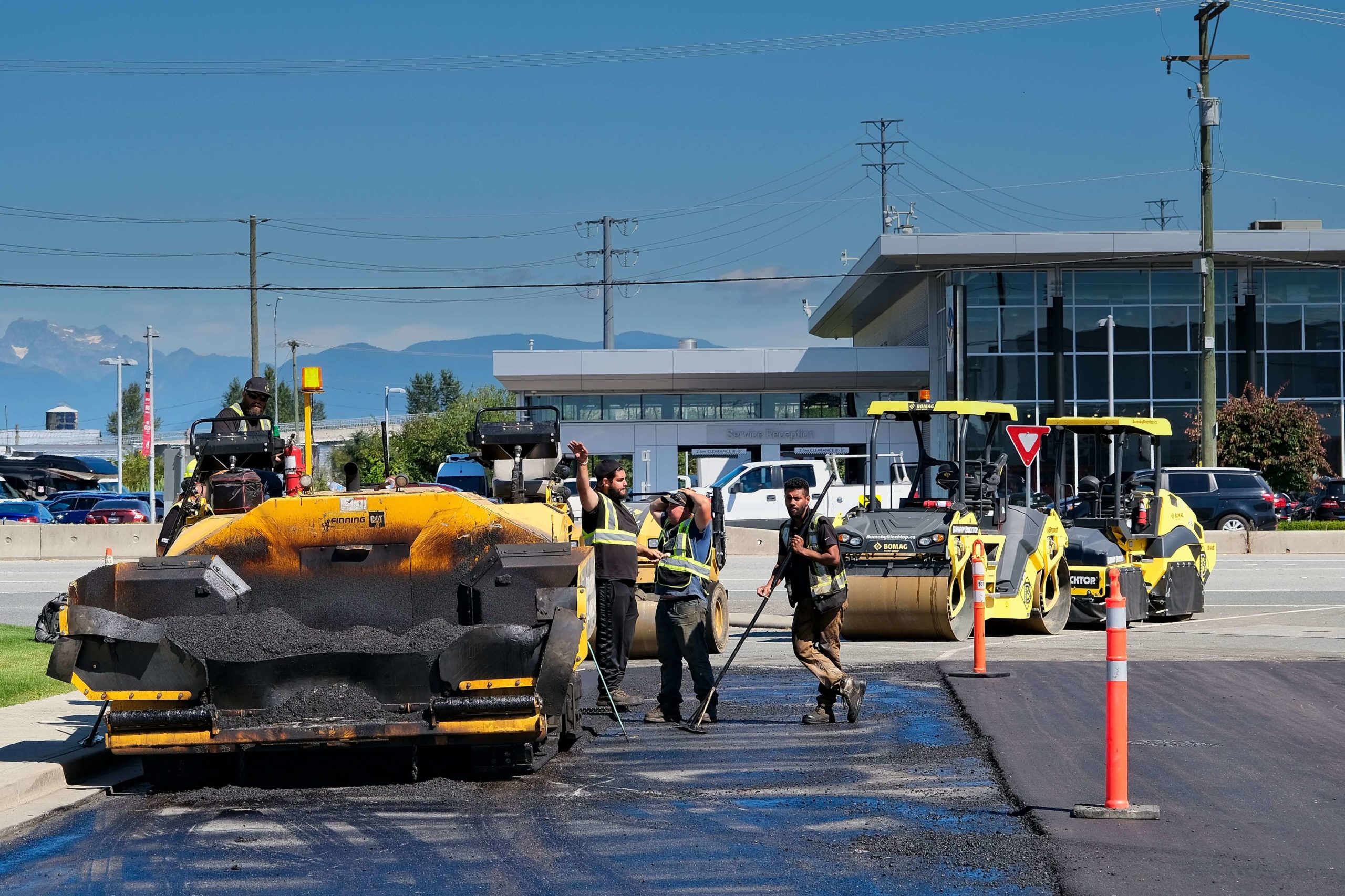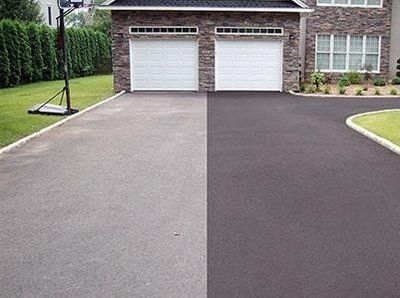Grasping Tilted Parking: How Asphalt Sealing Boosts Commercial Lots
Grasping Tilted Parking: How Asphalt Sealing Boosts Commercial Lots
Blog Article
Warm Mix Asphalt: A Lasting Option for Sidewalk
Warm Mix Asphalt (HMA) has emerged as a leading sustainable choice for pavement services, providing a myriad of innovative modern technologies and ecological advantages. Its capability to recycle materials and decrease power usage provides a compelling instance for its fostering in roadway construction tasks. Furthermore, the lasting performance and toughness of HMA make it a favored option for infrastructure growth. As the need for green building and construction methods grows, discovering the nuances of HMA's sustainability can give useful insights right into the future of pavement remedies.
Ecological Advantages of Hot Mix Asphalt

Furthermore, Warm Mix Asphalt helps to alleviate metropolitan warmth island impacts. Its dark color takes in sunshine, decreasing the quantity of warmth reflected back into the ambience contrasted to lighter-colored sidewalks. This can lower ambient temperature levels in metropolitan areas, reducing the demand for cooling and inevitably lowering power usage.
In addition, Warm Mix Asphalt adds to improved stormwater management. Its porous nature enables water to recharge and infiltrate the pavement groundwater products, reducing overflow and the threat of flooding. These environmental advantages make Hot Mix Asphalt a lasting option for leading highways and roadways.
Power Efficiency in HMA Production
Is power effectiveness an essential factor in the manufacturing of Warm Mix Asphalt (HMA)? Power plays a substantial duty in the manufacturing of HMA, influencing both expense and ecological sustainability. One key facet of power effectiveness in HMA production is the use of warm mix asphalt (WMA) innovations.
In addition, improvements in plant modern technologies have led to even more energy-efficient HMA production procedures. By optimizing energy use in HMA production, the sector can minimize its carbon footprint while maintaining high-grade pavement materials.
Recyclability of Warm Mix Asphalt
The recyclability of Warm Mix Asphalt (HMA) is a pivotal element of its sustainability and lasting environmental effect. HMA is just one of the most recycled materials in the United States, with over 100 million tons of recovered asphalt sidewalk (RAP) being recycled annually in brand-new sidewalk building. Reusing HMA provides numerous environmental benefits, such as decreasing the demand for virgin materials, decreasing energy intake throughout manufacturing, and lowering the amount of waste sent to land fills.
The procedure of reusing HMA includes milling Discover More the existing sidewalk, crushing it into smaller sized items, and mixing it with brand-new aggregate and asphalt binder to create a recycled mix. On the whole, the recyclability of HMA plays a substantial function in promoting lasting methods within the pavement industry.

Long-Term Efficiency of HMA
Asphalt sidewalks show sturdiness and durability over an extensive duration, reflecting the long-lasting performance of Hot Mix Asphalt (HMA) The durability of HMA can be associated to its capability to withstand heavy web traffic loads, harsh climate condition, and the results of aging. Studies have actually revealed that well-designed and effectively constructed HMA pavements can last for two decades or even more with routine upkeep. The secret to making the most of the lasting performance of HMA exists in making use of top notch materials, adhering to finest practices in building and construction, and executing reliable maintenance approaches. Appropriate drain, regular examinations, and timely repair services are important for preserving the structural honesty of HMA sidewalks gradually. Furthermore, developments Home Page in HMA innovation, such as making use of polymer-modified binders and warm mix asphalt, have actually further boosted the resilience and long life of HMA sidewalks. By prioritizing quality building and maintenance practices, HMA continues to confirm itself as a sustainable and cost-efficient remedy for long-lasting sidewalk framework.

HMA: Sturdiness and Sustainability
Demonstrating both longevity and sustainability, Hot Mix Asphalt (HMA) has come to be a foundation in the construction of resilient pavement facilities - hot mix asphalt. HMA's longevity comes from its capacity to endure hefty tons, harsh weather, and high web traffic volumes, making it a reliable selection for streets, freeways, and airport paths. The composition of HMA, which typically consists of aggregates, binder, and filler, plays a crucial duty in enhancing its durability and resistance to tear and put on
Additionally, HMA's sustainability lies in its recyclability and energy-efficient manufacturing procedure. The capability to recycle redeemed asphalt pavement (RAP) in brand-new HMA combinations minimizes the demand for virgin products and reduces the ecological effect of pavement building and upkeep. In addition, the energy efficiency of creating HMA hinges on its lower blending temperatures contrasted to various other sidewalk materials, leading to decreased energy consumption and greenhouse gas exhausts.
Final Thought
To conclude, warm mix asphalt (HMA) supplies a lasting solution for sidewalk with its environmentally friendly characteristics. HMA's recyclability, energy efficiency in production, and long-term sturdiness make it a green option for roadway building. By saving natural deposits, minimizing waste, and lowering greenhouse gas emissions, HMA plays an essential role in promoting sustainability in framework growth. Its capability to alleviate metropolitan heat island effects better emphasizes its value in producing durable and environmentally aware sidewalk systems.
HMA is one of the most recycled products in the United States, with over 100 million tons of redeemed asphalt sidewalk (RAP) being recycled every year in new pavement building.The procedure of reusing HMA entails crushing the existing pavement, squashing it right into smaller sized pieces, and mixing it with brand-new accumulation and asphalt binder to create a recycled mix.Asphalt pavements show sturdiness and durability over a prolonged period, mirroring the long-lasting performance of Warm Mix Asphalt (HMA) Furthermore, improvements in HMA technology, such as the use of polymer-modified binders and cozy mix asphalt, have actually even more improved the durability and long life of HMA pavements. The capacity to reuse reclaimed asphalt pavement (RAP) in brand-new HMA blends decreases the find more information need for virgin products and decreases the ecological influence of sidewalk construction and maintenance.
Report this page